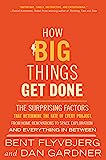“Pics or it didn’t happen.â€
The updated version of an older quip; “I’ll believe it when I see it.†A study of human perception or any familiarity with today’s media environment, however, should convince you that “I’ll see it when I believe it†is more accurate and more illuminating.
When I was about eight, I began to complain that I couldn’t see what was written on the blackboard. The nun’s simple response was to move me up a row in the classroom. When I continued to complain after reaching the front row, someone finally thought that a trip to the optometrist might be a good idea (this was circa 1961 when routine vision screening wasn’t the norm in elementary school). A few weeks later I had my first pair of glasses with a strong prescription.
I recall marveling on the drive home. It had never occurred to me that you were supposed to be able to read street signs from inside the car. The wider world wasn’t fuzzy after all.
I was doing just fine in school. If I hadn’t mentioned something, who knows how much longer it might have taken to discover my weak eyes. Nobody could see the problem until they believed what I was saying.
Although I was doing fine, I was working harder than I needed to. I was overpowering the problem rather than solving it effectively. Can’t see the board, move closer. Still can’t see it, move closer still.
What’s been on my mind lately is what lessons did I take away from this experience without seeing them at the time.
There’s the obvious lesson that effort is rewarded. Most of our systems hammer this lesson home. I think there’s a second, more subtle, lesson. If the results are good, then the effort was well spent. Because effort is worthy it’s hard to ask what can be accomplished with less effort. Powering through is an easy strategy to understand and to implement. “Working smarter†makes for a nice slogan but is much more difficult to put into practice.
I’ve certainly been guilty of trotting out the slogan. I suspect I still have a lot to learn about putting it into effective practice. I did take a look at this quite a while back with a look at how we might go about balancing diligence and laziness. Perhaps it’s time to take another look at the question of how to put in less effort.
